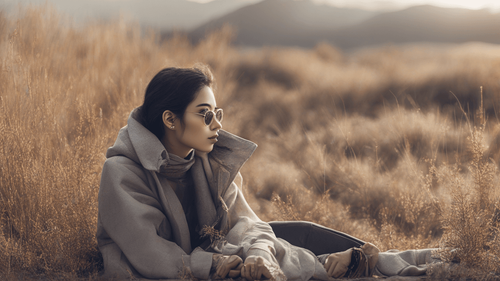
Introduction
In today's digital age, the convergence of artificial intelligence and creativity has paved the way for exciting innovations in various fields. One remarkable manifestation of this synergy is the ability to make picture AI, a revolutionary concept that merges the power of technology with artistic expression. This article delves into the intricacies of using AI to create stunning images, exploring its applications, benefits, techniques, and answering frequently asked questions.
Make Picture AI: A New Frontier in Creativity
Artificial Intelligence (AI) has transcended traditional boundaries, infiltrating creative domains that were once solely human-driven. This includes the fascinating realm of visual arts. With the advent of sophisticated AI algorithms and neural networks, it's now possible to harness the computational prowess of machines to craft captivating images that evoke emotions, tell stories, and leave lasting impressions.
Understanding AI-Powered Image Creation
AI-powered image creation involves training algorithms on vast datasets of images. These algorithms then learn to generate new images by identifying patterns, textures, and styles from the training data. This process enables AI systems to create original artworks, ranging from paintings to photographs, that often defy traditional conventions.
Benefits of Using AI for Image Generation
1. Unleashing Unbounded Creativity
AI-powered image creation transcends human limitations, exploring uncharted territories of creativity. It can amalgamate diverse styles, generate novel concepts, and fuse artistic elements that challenge conventional norms.
2. Enhancing Efficiency in Visual Design
The iterative nature of AI allows designers to rapidly experiment with various ideas, styles, and concepts. This accelerates the creative process, enabling artists to refine their visions efficiently.
3. Personalized Artistic Expressions
AI caters to individual preferences by learning from an artist's existing work. This enables the AI to create images that align with an artist's unique style, while also offering new directions for exploration.
4. Pushing Artistic Boundaries
By seamlessly blending styles, genres, and techniques, AI-generated art pushes the boundaries of traditional artistic expression, inspiring artists to experiment beyond their comfort zones.
5. Amplifying Collaboration Between Humans and Machines
AI serves as a co-creator, augmenting human imagination and sparking collaborative efforts between artists and algorithms. This symbiotic relationship leads to unprecedented artistic outcomes.
Techniques to Make Picture AI a Reality
1. Generative Adversarial Networks (GANs)
GANs are at the forefront of AI image creation. They consist of two neural networks, a generator, and a discriminator, locked in a creative duel. The generator creates images, while the discriminator evaluates their authenticity. Over time, GANs produce increasingly realistic and novel images.
2. Style Transfer
Style transfer involves infusing the style of one image onto another. This technique leverages deep neural networks to analyze the content and style of two images separately. The result is a captivating fusion of the two styles.
3. Autoencoders
Autoencoders are neural networks designed to learn efficient representations of data. They can be used to create novel images by training on a dataset and then altering the learned representation to generate unique visuals.
4. Reinforcement Learning for Creativity
Reinforcement learning models can be trained to optimize certain criteria, such as visual appeal or novelty. These models can then generate images based on these optimized objectives.
FAQs About Making Picture AI
How does AI create images?
AI creates images by analyzing patterns in existing datasets and learning to generate new visuals based on these patterns.
Can AI-generated art be considered authentic?
Yes, AI-generated art possesses authenticity in its unique algorithmic interpretation, challenging traditional notions of creativity.
Do artists lose creative control when using AI?
No, AI is a tool that amplifies creativity. Artists retain control over the training data and parameters, influencing the AI's output.
Is AI-generated art commercially viable?
Absolutely. AI-generated art has gained recognition in the art market, appealing to collectors and enthusiasts alike.
Can AI-created images evoke emotions?
Yes, AI-generated images can evoke emotions, often blurring the line between human and machine creativity.
Will AI replace human artists?
No, AI complements human creativity. It opens new avenues for exploration, but the essence of human artistic expression remains invaluable.
Conclusion
The journey to make picture AI is an exhilarating one, marked by the convergence of technology and creativity. As AI continues to evolve, it propels us towards uncharted territories of artistic expression, challenging conventions and inspiring innovation. Through techniques like GANs, style transfer, and reinforcement learning, the realm of AI-generated images is expanding at an astonishing pace. Artists, designers, and enthusiasts alike are empowered to explore new dimensions of creativity, pushing the boundaries of what's possible. So, embrace the future, collaborate with algorithms, and unleash your creative potential with AI-powered image creation.